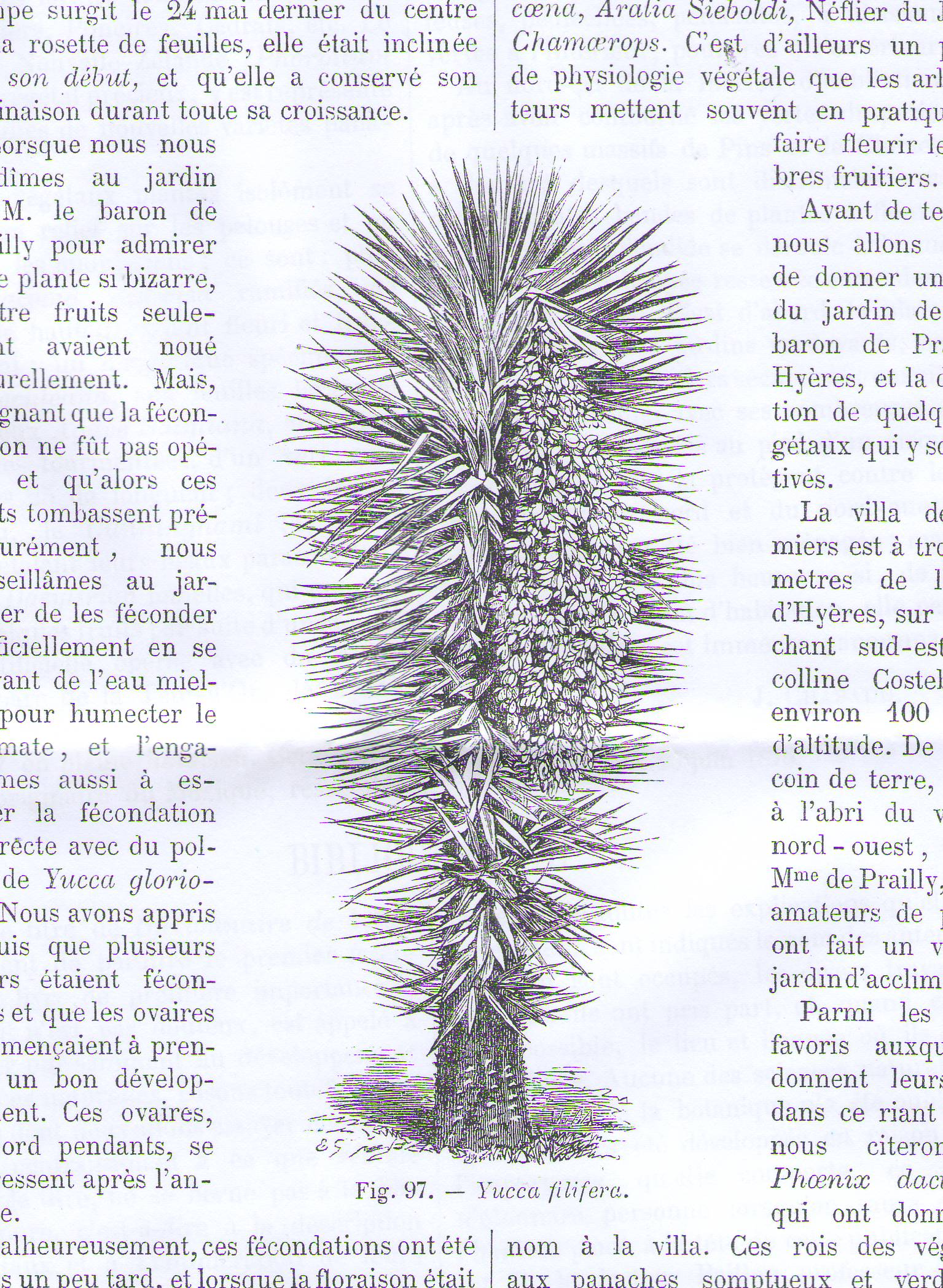Yucca filifera on:
[Wikipedia]
[Google]
[Amazon]
''Yucca filifera'' is a member of the subfamily Agavaceae, family Asparagaceae, native to central
Tropicos, Missouri Botanical Garden, 2013 It was later introduced to Europe and described for science by J. Benjamin Chabaud (1833-1915) in 1876.
 A tall, heavily branched yucca, ''Y. filifera'' has straight, ensiform leaves growing in rosette-shaped bunches from the end of each stem.R.J. Hodgkiss
A tall, heavily branched yucca, ''Y. filifera'' has straight, ensiform leaves growing in rosette-shaped bunches from the end of each stem.R.J. Hodgkiss
The Yucca Page
20 February 2012, accessed 25 March 2013 Its inflorescence hangs over and is made of many separate white flowers.
InfoJardin, Jardineros Paisajismo Plantas, 2013, accessed 25 March 2013 Am enormous specimen of ''Yucca filifera'' stands in front of the Anderson Gallery at theYucca filifera, from ''Trees of Stanford''
/ref>
Mexico
Mexico (Spanish: México), officially the United Mexican States, is a country in the southern portion of North America. It is bordered to the north by the United States; to the south and west by the Pacific Ocean; to the southeast by Guatema ...
.
History
It was discovered in 1840 in northeastern Mexico betweenSaltillo
Saltillo () is the capital and largest city of the northeastern Mexican state of Coahuila and is also the municipal seat of the municipality of the same name. Mexico City, Monterrey, and Saltillo are all connected by a major railroad and highwa ...
and Parras () on 19 May 1847 by merchant and explorer Josiah Gregg.Yucca filifera ChabaudTropicos, Missouri Botanical Garden, 2013 It was later introduced to Europe and described for science by J. Benjamin Chabaud (1833-1915) in 1876.
Description
 A tall, heavily branched yucca, ''Y. filifera'' has straight, ensiform leaves growing in rosette-shaped bunches from the end of each stem.R.J. Hodgkiss
A tall, heavily branched yucca, ''Y. filifera'' has straight, ensiform leaves growing in rosette-shaped bunches from the end of each stem.R.J. HodgkissThe Yucca Page
20 February 2012, accessed 25 March 2013 Its inflorescence hangs over and is made of many separate white flowers.
Status
''Yucca filifera'' is not considered to be threatened by the IUCN, as it has a very large range and its population appears to be stable. It is locally used for fibers, and may experience some threat from habitat degradation.Cultivation
''Y. filifera'' can be cultivated inxerophytic
A xerophyte (from Greek ξηρός ''xeros'' 'dry' + φυτόν ''phuton'' 'plant') is a species of plant that has adaptations to survive in an environment with little liquid water, such as a desert such as the Sahara or places in the Alps or t ...
conditions. It is used as roof covering and as a source of fibre for handcrafting by the indigenous people, who call it ''palma china'' or ''izote''.Palma china, Izote, Palma corriente, Palma grande - Yucca filiferaInfoJardin, Jardineros Paisajismo Plantas, 2013, accessed 25 March 2013 Am enormous specimen of ''Yucca filifera'' stands in front of the Anderson Gallery at the
Cantor Arts Center
The Iris & B. Gerald Cantor Center for Visual Arts at Stanford University, formerly the Stanford University Museum of Art, and commonly known as the Cantor Arts Center, is an art museum on the campus of Stanford University in Stanford, California. ...
, Stanford University. It was transplanted to this site in the 1880s. In the spring, it bears long clusters of white flowers, some well over a meter long./ref>
See also
*References
{{Taxonbar, from=Q150210 filifera Flora of Mexico Plants described in 1876